6 min read
Share this post

The Off2Class step-by-step ESL curriculum incorporates grammar and vocabulary together with speaking, listening, reading and writing tasks – every lesson is step-by-step. Each unit is organized around a theme. Here’s a summary and tips to teach ESL students to talk about themselves!
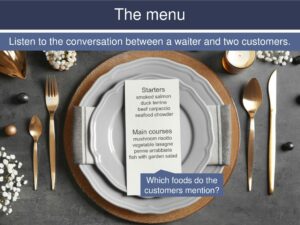
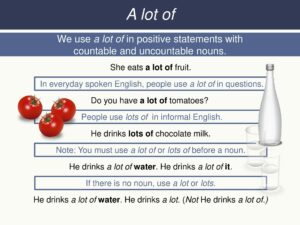 A great way to teach ESL students to talk about themselves is to start with a topic that’s easy to discuss: food! The lessons in this unit explore the theme of food and eating to cover the use of the indefinite articles a/an, along with any and some with countable and uncountable (count and non-count nouns), much, many and a lot of, along with a handful of linking and transition words to show sequence. At the end of the unit, students can order food at a restaurant and write about organizing a dinner party.
A great way to teach ESL students to talk about themselves is to start with a topic that’s easy to discuss: food! The lessons in this unit explore the theme of food and eating to cover the use of the indefinite articles a/an, along with any and some with countable and uncountable (count and non-count nouns), much, many and a lot of, along with a handful of linking and transition words to show sequence. At the end of the unit, students can order food at a restaurant and write about organizing a dinner party.
What tips can we provide for these lessons? Well, there are a couple of traps to watch out for when teaching count and non-count nouns. First, avoid using nouns that can be used both in a countable and uncountable manner; this can cause confusion for students. Second, while we teach that any is used in questions, remember that offers can use some – don’t confuse your students by using offers at this point.
Third, when introducing much, many and a lot of, be aware that some of your students will be struggling with countable and uncountable nouns – is it some chocolate or three chocolates? – so take it nice and easy. Finally, insist on linking words in writing exercises. Start with first, second, then, and next. Linking words show the ability to form logical and coherent arguments in English. Insist that your students link thoughts and ideas in a logical manner – your students will thank you later.
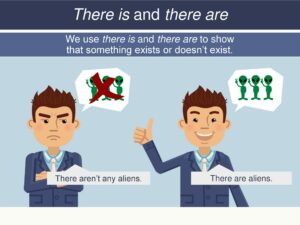
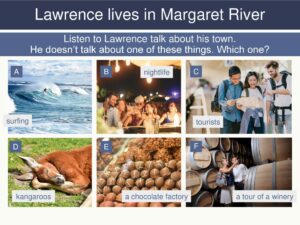
If you want to teach ESL students to talk about themselves, then stay local! This unit explores the students’ local surroundings to introduce there is/there are, have for possessions and belongings, and possessive -s as well as possessive pronouns. Students explore these areas by looking at their city, their neighborhood and their home. At the end of this unit, students can talk about things that they own and places in their neighborhood. They’ll be able to give basic directions too!
‘There is/there are’ is a minefield for many students. First, many languages express the existence or non-existence of things in a very different way, and while there is/there are appear simple in form, remember that we use these expressions for sentences in which there is no subject – that the grammatical term for there is/there are is known as non-referential constructions should provide all the warning you need. In ‘There are some trees in the park’, there is no subject. This will confuse many students, even if they don’t know why! Their native language may influence them to produce sentences this way — so go slowly.
When introducing possessive pronouns like mine and yours, ensure students are already using possessive adjectives such as my and your. Also, by now, there, they’re and their is starting to raise its ugly head – be sympathetic to students who appear to suddenly move backward for a week or so. Finally, possessive -s is going to be causing problems for students’ pronunciation skills; just think ‘James’s shirt’ or ‘the children’s books.’ It’s preferable to model and drill ad nauseam until students really start to feel comfortable.
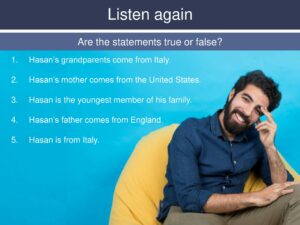
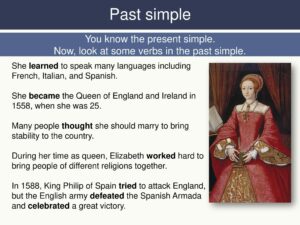 Lessons that are meaningful to a student are often rewarding to teach, and family is a great way to teach ESL students to talk about themselves. Unit 18 allows students to talk about their immediate and extended families. This is a rather intensive unit during which students study the past simple for be, regular and irregular verbs. By the end of the unit, students will be able to start using the past simple. First about events in their own lives and then, hopefully, in the lives of others.
Lessons that are meaningful to a student are often rewarding to teach, and family is a great way to teach ESL students to talk about themselves. Unit 18 allows students to talk about their immediate and extended families. This is a rather intensive unit during which students study the past simple for be, regular and irregular verbs. By the end of the unit, students will be able to start using the past simple. First about events in their own lives and then, hopefully, in the lives of others.
The best thing about teaching family-themed lessons is that all students always have plenty to talk about. And since students are talking about people they know intimately, it’s the perfect situation for the past simple. There are some tips that all teachers should take notice of when teaching the past simple. The first is that was, were, wasn’t and weren’t are hard for students to hear. This is partly because generally appear in unaccented positions in phrases. It can also be challenging to differentiate between the positive and negative forms in connected speech. In other words, speak slowly.
Second, students love to learn the past simple because it instantly broadens their ability to speak. There are two main ideas worth passing on here. The first is to take the time to teach explicitly the three pronunciations of -ed in regular past participles; the /t/ in stopped, the /d/ in enjoyed and the /ɪd/ in waited. Not only are the three ‘rules’ easy to learn, but they will also improve the student’s listening skills. Finally, the number of commonly-used irregular verbs means you should think carefully about how many to introduce right now. You don’t want your first lessons on the past simple to be full of verbs with irregular participles.
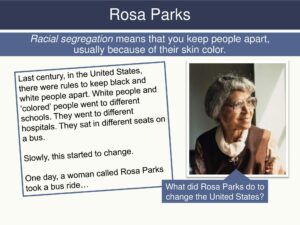
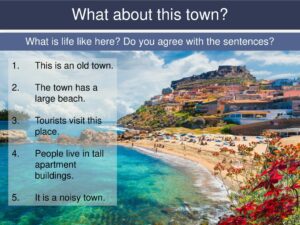 The Off2Class step-by-step ESL curriculum will eventually contain over 250 lessons in 70 units covering A1 to C1, or Beginner to Advanced. We hope that this post helps you to teach ESL students to talk about themselves!
The Off2Class step-by-step ESL curriculum will eventually contain over 250 lessons in 70 units covering A1 to C1, or Beginner to Advanced. We hope that this post helps you to teach ESL students to talk about themselves!
Do you agree or disagree? While it’s impossible to cover everything to include or avoid while teaching, maybe you think we’ve missed something?
Share this post



Leave a Reply